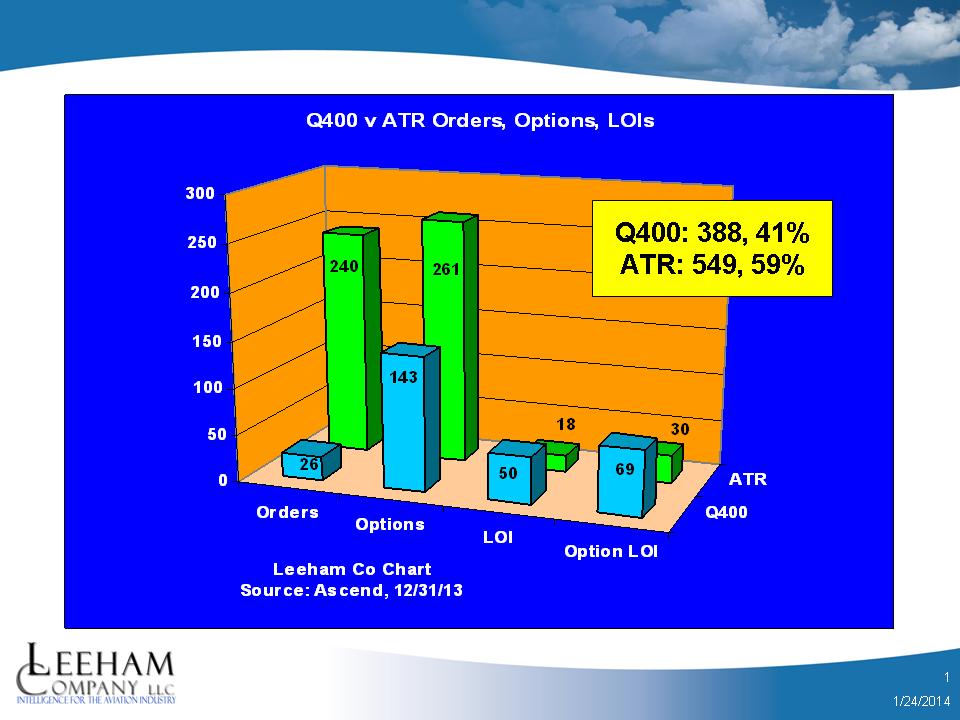Leeham News and Analysis
There's more to real news than a news release.
Alaska CEO Tilden talks about airline, surviving mega-carrier competition
Alaska Airlines CEO Brad Tilden was keynote at the Pacific Northwest Aerospace Alliance Day One conference Feb. 4. He spoke about the airline’s transformation into a carrier that survived without filing for bankruptcy; and against Delta Air Lines’ latest competition in Seattle.
[youtube=http://www.youtube.com/watch?v=ujjPspppMOk]
.
[youtube=http://www.youtube.com/watch?v=Ia1qXy16zpc&feature=youtu.be]
.
[youtube=http://youtu.be/GNl-9h8QdTQ]
.
[youtube=http://youtu.be/VyBLE4QzcuU]
Odds and Ends: A boost for the A330? Problems continue at Boeing Charleston
A boost for the A330? Aviation Week reports Airbus is offering China an A330 completion center in return for an order for 200 A330s. At the current production rate of 10/mo over the Airbus production year of 11 months, this is nearly two more years on to the current 27 month backlog.
Problems continue at Boeing Charleston: The Seattle Times has a long piece about the continue problems at Boeing Charleston, the 787 plant there.
Updating the A380: the prospect of a neo version and what’s involved
Recent headlines and this column report that Airbus is considering re-engining the popular A330 with GE Aviation GEnx or Rolls-Royce Trent 1000-TEN power plants. A New Engine Option and other changes would improve the A330’s economy by an estimated 10% percent after offsets for increased drag and weight.
But the A330 isn’t the only Airbus airplane being considered for new engines made popular by the A320neo family. Tim Clark, president and chief operating officer of Emirates Airlines, urged Airbus to improve efficiency of the giant A380 with engine technology found in newer generation aircraft.
How feasible is an A380neo? What are the technological issues? Would there be enough of an economic gain? And is there a market for an A380neo?
The A380 of today
The A380 has been hailed as a highly efficient airliner since it went into service 2008, assuming the giant plane can be filled. But only six years later, the first voices have been raised that this will not continue to be the case should the continuous improvements that have been flowing into the airframe not pick up speed.
The launch of the Boeing 777X also brought focus on the state of the A380 come the latter part of this decade when the 777-9X enters flight testing in advance of its planned 2020 entry-into-service. Tim Clark expressed that “it is time that the A380 gets an injection of the new technology which is now becoming available for the A320/737 in the form of GTF/LEAP and GE9X for the 777X. “
Before we look into what can be done short-to–mid-term to inject improved efficiency, let’s establish the baseline as it exists today. The A380 is considered by some the most efficient way of flying passengers between two long haul points if there is enough of demand. The competition today is the Boeing 777-300ER and 747-8i. (Qantas Airways is dropping some A380 flights that have 50% load factors, demonstrating the aircraft is inefficient if the demand is insufficient.)
Let’s assume we want to transport passengers between San Francisco and Hong Kong, one of the longer flights which are made non-stop in both directions. Going West, it takes a Cathay 777-300ER 15 hours and going East, 12 hours, the difference being due to prevailing headwinds going West. For our check, we will use the more demanding of these legs, which then works out as the equivalent of flying 7,200nm. To compare the three different aircraft in a fair way, we need to load them to the same payload, in our case passengers with luggage. We will not consider cargo in this initial analysis. The leg chosen is not one which allows much weight for cargo, but cargo certainly belongs to a complete analysis of an airplane and we will point out where it will affect any conclusions.
When comparing the standard three-class seating numbers between the OEMs, it is clear these are not made to the same standards of comfort. Airbus has admitted that the A380 is too lightly loaded at 525 passengers. The 777-300ER at nine abreast and 365 seats is equipped with a comfortable 18’’ economy class at 32’’ pitch but the business class is modeled with a non-standard 48’’ pitch. The 747-8i at 467 seats is not laid out to any comfort standards comparable to the other two. To ensure an apples-to-apples comparison we have equipped all aircraft with the same three-class cabin with a standard seating consisting of first class at 81’’ pitch, business class at 60’’ pitch and economy class with 32’’ pitch. Seat widths are 37’’, 22’’ and 18’ respectively and the ratios of the different premium seatings vs. economy are kept the same. Here the aircraft are listed with the in-service year and with their respective payload capabilities:
Seahawk dismantles Bronco (literally)
OK, OK, it’s not aviation but we don’t care. Note the position of the Bronco to the painted word behind it. Coincidence or not, it kind of fits.
[youtube http://www.youtube.com/watch?v=llLDGSitDWA&w=560&h=315]
.
.
Here’s the article explaining all this.
Go Hawks on Super Bowl Sunday–dismantle those Broncos.
Odds and Ends: A330neo decision could be near; KC-46A; Countdown to Superbowl; A400M
A330neo decision: Aviation Week reports that a decision to proceed with the Airbus A330neo could be “imminent.” The report also discusses the advocacy by Tim Clark, COO of Emirates Airlines, to re-engine the Airbus A380. As with the Reuters and Bloomberg articles we previously linked, the Aviation Week piece also confirms much of what we were the first news outlet to report in December. We have a launch in 2014 rather than 2015 reported in Aviation Week, although we both have a decision to proceed for this year. Aviation Week and Bloomberg report that the decision could come as early as March.
Aviation Week confirms our report that Pratt & Whitney would be unlikely to bid on the project because the short time lime precludes development of the big engine version of the Geared Turbo Fan.
KC-46A at ‘high risk’ for delay: A US government report suggests the Boeing KC-46A tanker is at ‘high risk’ of a six month delay.
These are not unusual for military programs, nor, it seems, is it any longer unusual for new or derivative aircraft programs. Boeing believes the program is on time, but even if a six or 12 month delay does emerge, by today’s standards, this indeed is “on time.”
Countdown to Super Bowl: Boeing painted a Boeing 747-8F test plane in the Seattle Seahawks livery and this week “skywrote” the number 12 on a flight. The Seahawks play the Denver Broncos Sunday in New Jersey for the Super Bowl. The number “12” represents “the 12th man,” of the collective Seahawks fan base.
We think it would be super for the 747 to overfly the game Sunday, the ultimate 12th man appearance. Alas, Boeing says there are no plans to do so.
A400M: Cool picture. No other words needed.

Odds and Ends: A330neo; The 12th Man; Boeing’s earnings
Clearing the air on the A330neo, again: Bloomberg News has an extensive story on the prospective development of the A330neo. Following a report from Reuters, these two news articles basically confirm everything we reported in December.
The 12th Man: The Seattle Seahawks, which plays in the Super Bowl Sunday against the Denver Broncos, is well known within the National Football League for its “12th Man.” This is the fan base which has set records for being the loudest fans in football, at a record 137db. They’ve also been recorded on the Richter Scale for their stomping at the Seahawks’ Century Link Field (that’s a local phone company, and the name is routinely shortened to “the Clink”).
Boeing is a corp0rate sponsor of the Seahawks and rolled out its 747-8F house test plane in a new Seahawks livery.

Boeing’s earnings: Boeing reported its 2013 earnings and while they were a record profit, the forecast disappointed and the stock took a major hit Wednesday. The Seattle Times has the recap.
British Air’s exit from dedicated cargo fuels doubt over 747-8F future
The decision by British Airways to exit the dedicated freighter business by returning three Boeing 747-8Fs to ACMI operator Atlas Air demonstrates the continued weakness of the global air freight market.
Boeing is counting on the global freight market to improve this year, and with it, sales of the 747-8F. We’re not so sanguine.
Even if the global freight market improves, we are skeptical that Boeing will see much in the way of orders to boost this faltering program. There remain a large number of 747-400Fs in the desert that can be recalled to service at a cost a lot less than a new-build 747-8F will cost. Likewise, there are still a fair number of 747-400 passenger aircraft in service and in storage ready for conversion.
We recognize that the 747-8F is more fuel efficient and maintenance is less than the 744s, but the much higher capital cost demands high utilization and risks greater financial impacts if the airplane has to be parked during a downturn.
Boeing’s 777F is smaller, less costly and uses less fuel than the 747-8F. While it also carries less, it can be argued that the 777F is “right-sizing” aircraft for the changing market conditions. But Boeing is struggling even with this model. The company sold just one nine 777Fs since late 2011.
Boeing plans a 777-8F, but this will not enter service until well after the 747-8 program is likely terminated.
Airbus hasn’t had much success for its new-build A330-200F. Some customers proved to be unable to take delivery, while another—Intrepid Aviation—changed its entire order of 20 for the passenger version and up-gauging these to the A330-300 in almost all cases. The cost-benefit analysis by some concluded the price of the new-build A330F was too high for the benefit gained through economic efficiencies and payload. Airbus announced a small sale at the Dubai Air Show, but otherwise has seen a steady decline in the backlog over and above deliveries.
Aside from the continued economic weakness and a surplus of available used equipment, the belly cargo-carrying capability of the Boeing 777-300ER and the Airbus A330 enables shippers to take advantage of these aircraft for many flights. Interestingly, when Boeing prepared to ship all the equipment and repair components around the global for its 787 battery repairs, it used belly-freight capacity, not dedicated main-deck freighters.
The proliferation of 777s, A330s and the forthcoming A350 and the 777X may well further spell the demise of the 747-8F as nothing more than a niche aircraft based largely on sales already completed. We certainly expect to see a few more sales, but nothing consequential.


